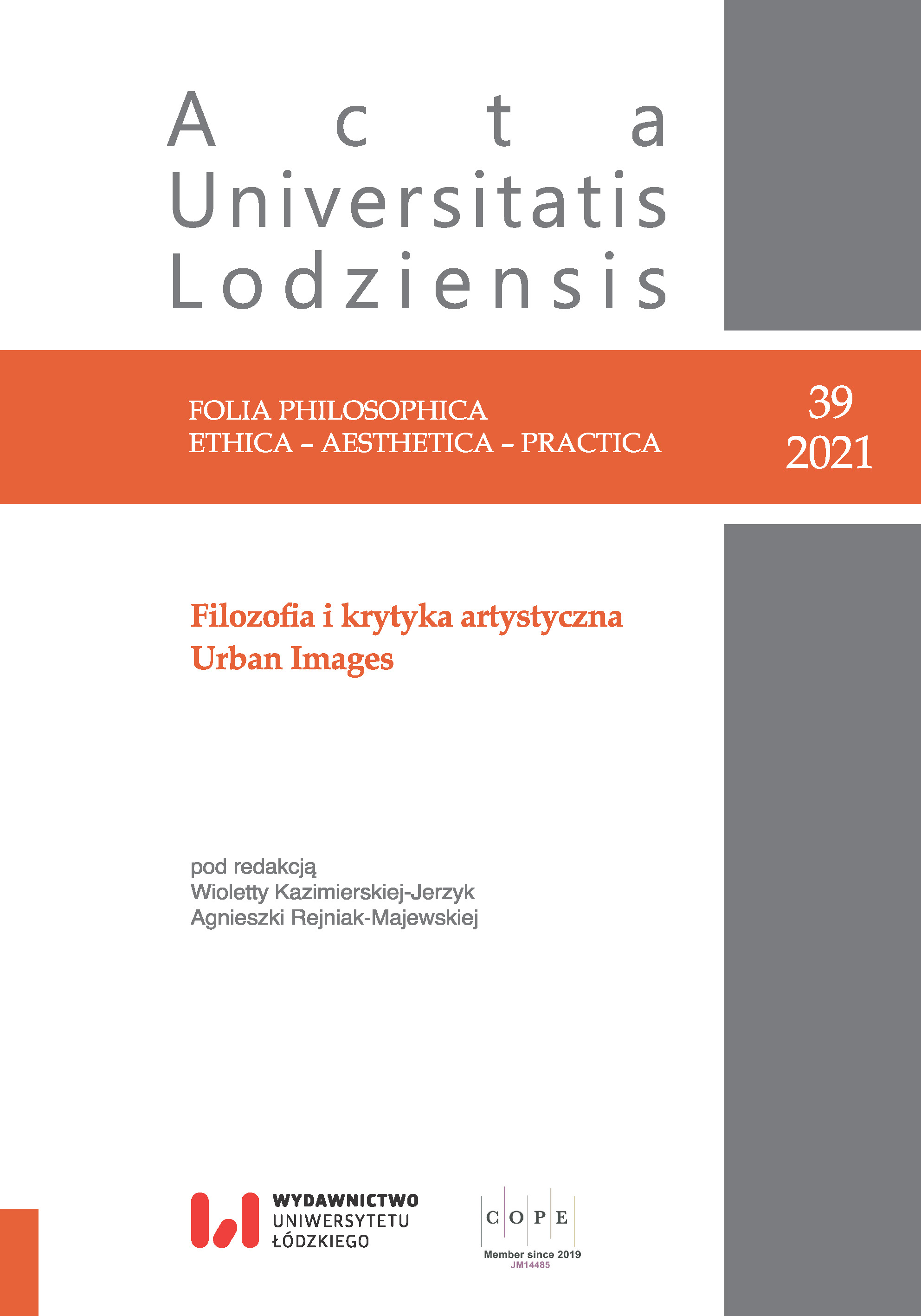El refugio cultural festival, graffiti and urban art in the historic centre of Puebla in Mexico
DOI:
https://doi.org/10.18778/0208-6107.39.07Słowa kluczowe:
public space, graffiti, cultural festival, historic centre, urban artAbstrakt
The city of Puebla was put on the UNESCO list of Cultural Heritage of Humanity in 1987; its history dates back to the sixteenth century allowing for the preservation of various important buildings, such as churches with baroque and neoclassical facades, buildings from the period known as Novo Hispanics, when some of its historic neighbourhoods were founded, including the Barrio el Refugio, hereinafter referred to as BR, where indigenous people employed in the lime manufacture used to live. Since those times, however, the neighbourhood has become a place with bad reputation, “a den of thieves” (Leicht). The traditional, religious commemoration, the “Fiesta Patronal de la Virgen del Refugio,” is the most important celebration in the neighbourhood. In the Church of La Virgen del Refugio, built in the seventeenth century after an inhabitant painted a mural with the image of the virgin, the “mañanitas” are sung with the Mariachi. During the patronal feast, the “El Refugio Cultural Festival” is held with more than a hundred artists taking part and creating about a thousand murals according to the organiser’s estimation. This happens in the city where a project “Puebla Ciudad Mural” was started, as an initiative of the “Colectivo Tomate,” which sought to regenerate the neighbourhood through art, in alliance with the government and private companies. However, these policies are more tourist oriented rather than benefit the neighbourhood. For this reason, the graffiti movement “Festival Cultural el Refugio” is becoming a meeting point for urban artists from Mexico and Puebla, accustomed to taking up public or private space, as they demand space where they can live and express themselves. For ten years the festival has realised more than one thousand pieces of urban art, including Wild Style graffiti, bombs, stickers, stencil, and murals. All this is done under the patronage of the artists themselves, as three hundred of them come from all over the country to take part in every edition of the festival that does not receive any government support or other form of sponsorship.
Bibliografia
Bazant, J. (2014). Planeación Urbana Estratégica. Metódos y técnicas de análisis. México: Editorial Trillas.
Google Scholar
Carlsonn, B. and Hop, L. (2010). Street Art. Recetario de técnicas y materiales del arteurbano. Barcelona: Editorial GG, SL.
Google Scholar
Castleman, C. (2012). Getting up/Hacerse ver: el grafiti metropolitano en Nueva York. Salamanca: Capitán Swing.
Google Scholar
Colectivo Tomate, (2020). Colectivo Tomate. [online] Available at: https://colectivotomate.org/
Google Scholar
Cruz Salazar, T. (2010). Writers, Taggers, Graffers y Crews: Identidades juveniles entorno al grafiteo. Nueva antropología, 23 (72), pp. 103–120. http://www.scielo.org.mx/scielo.php?script=sci_arttext&pid=S0185-06362010000100006&lng=es&tlng=es
Google Scholar
Figueroa Saavedra, F. (2017). Grafiti y civilización. Madrid: self-publishing.
Google Scholar
Galindo Flores, E. (2021). La gráfica popular, un referente de la identidad del diseñográfico mexicano. Cuaderno, 101, pp. 91–105. https://doi.org/10.18682/cdc.vi101.4087.
Google Scholar
Gengli, L. (2018). Spray on Walls, urban adventure of graffiti art. Hong Kong: Send Points.
Google Scholar
Gonzalez, L. El Cross Media: definición y su papel en la estrategia de marketing. Lorenzo González. [online] Available at: https://lorenzo-gonzalez.com/el-cross-media-definicion-y-papel-en-la-estrategia-de-marketing/
Google Scholar
Grané Feliu, P., Rifà Valls, M. and Àngel Essomba Gelabert, M. (2017). Educación comunitaria a través de las artes: hacia una etnografía visual del “graffiti” y del arte urbano con jóvenes. Archivos, 12, pp. 61–78. https://doi.org/10.5209/ARTE.57562
Google Scholar
Hernández Sanchéz, A. (2012). El espacio público y arteen México durante el siglo xx. de la dictadura a la democracia. On the W@terfront, 21, pp. 21–40. https://revistes.ub.edu/index.php/waterfront/article/view/18753
Google Scholar
Hernández Sánchez, A. et al. (2017). “Bolsa del Diablo/Bolsa de Color” proyecto de vinculación barrio-universidad-gobierno, para la mejora del espacio público en la Zona de Monumentos de la Ciudad de Puebla, calle 24 Poniente. Kult-Ur, 4 (8), pp. 287–306. https://doi.org/10.6035/Kult-ur.2017.4.8.11
Google Scholar
Hirschenberg, J. (1978). La fundación de Puebla de los Angeles – mito y realidad. Historia Mexicana, 28 (2(110)), pp. 185–223.
Google Scholar
Leicht, H. (1967). Las calles de Puebla: estudio histórico. Puebla: Comision de Promocion Cultural del Gobierno.
Google Scholar
Remesar, A., and Ricart, N. (2013). Reflexiones sobre el espacio público. On the w@terfront, 25, pp. 5–35. https://revistes.ub.edu/index.php/waterfront/article/view/18792
Google Scholar
SEGURIDAD, (2020). Detienen a ‘Los de la Bolita’ en barrio El Refugio. El Popular, 17 May. https://elpopular.mx/secciones/seguridad/2020/05/17/detienen-a-los-de-la-bolita-en-barrio-el-refugio
Google Scholar
Terán Bonilla, J. A. (2010). Arquitectura y urbanismo del Centro Historico de la Ciudad de Puebla 1531–1917. Puebla: Gobierno del Estado de Puebla.
Google Scholar
Pobrania
Opublikowane
Jak cytować
Numer
Dział
Licencja

Utwór dostępny jest na licencji Creative Commons Uznanie autorstwa – Użycie niekomercyjne – Bez utworów zależnych 4.0 Międzynarodowe.












